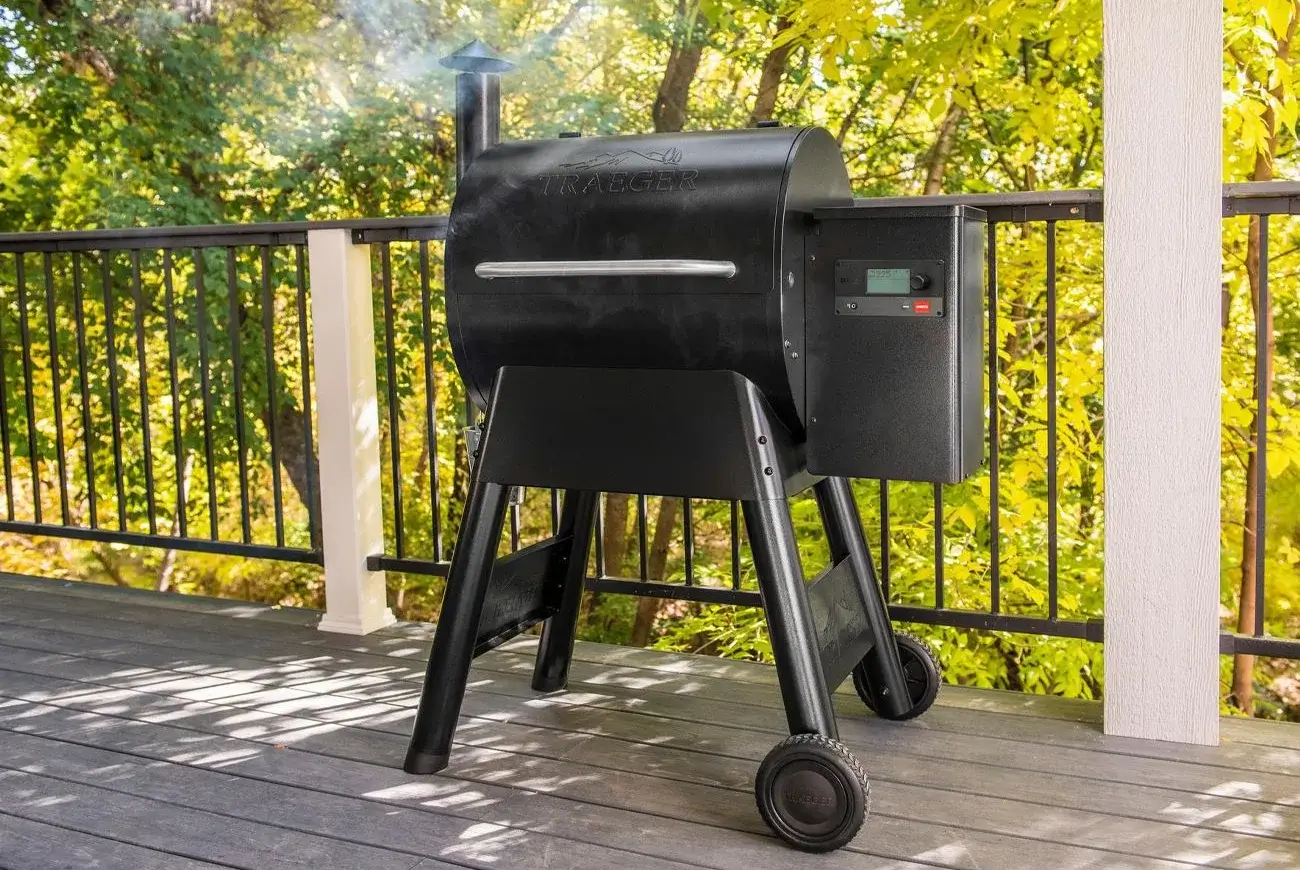It’s not made to sear steaks, but for all your low-and-slow smoking and grilling needs, the Traeger makes life easy.
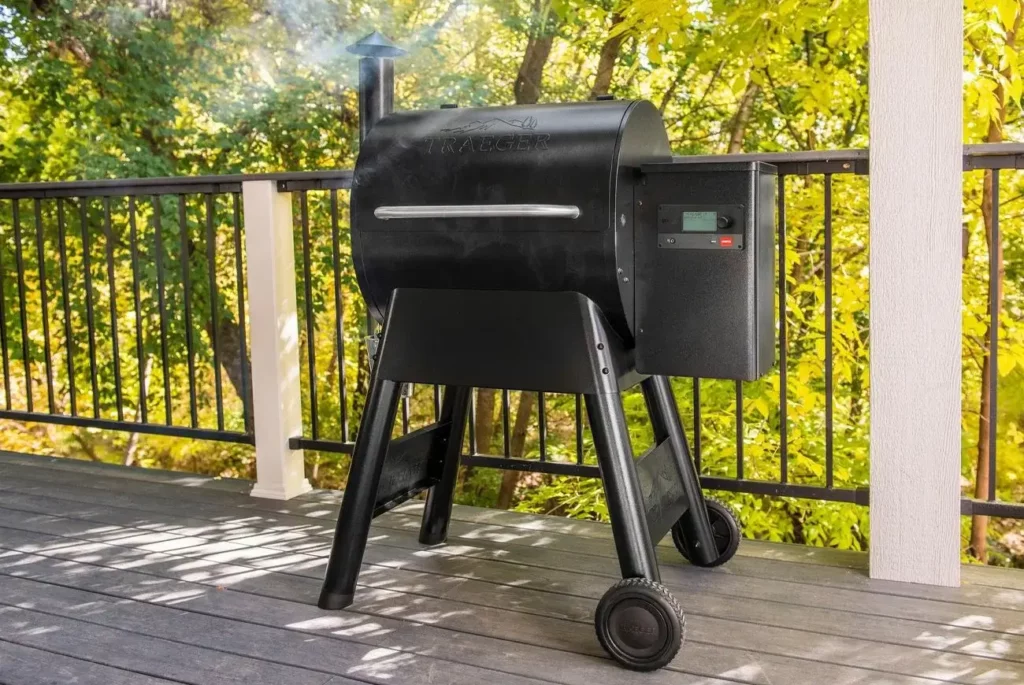
Typically, the grilling world favors the analog: big fires, high temps, sizzling sears. It’s surprising, then, that pellet grills — in particular Traeger, the company that introduced them — have slowly grown a cult following and become some of the most beloved grills in American backyards. This is a grill that’s equipped with Wifi, needs to be plugged in, and shows no visible flame while in use. It’s one of the most hands-off BBQing experiences Americans have ever had…and yet the same customers that typically want to get they’re hands dirty absolutely love them.
Indeed, when grill sales surged during the covid-19 pandemic, pellet grills outsold charcoal grills in market share of revenue, coming in second only to gas grills. (This same report names “convenience” and “time-efficiency” as two primary driving forces of this change.)
And I have to say…after grilling on a Traeger Pro 575 for the past month, it’s easy to see why.
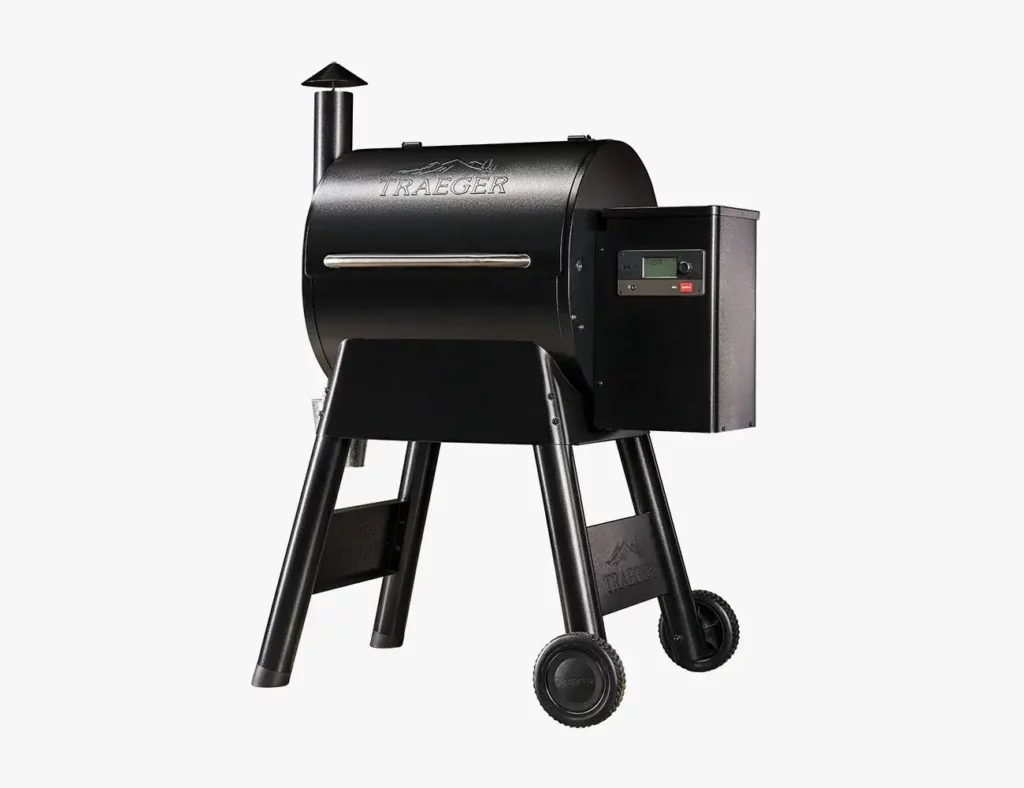
Table Of Contents
Pros
- Connectivity makes it incredibly convenient
- Even, smoky flavor a given
- Pellets make life easy
Cons
- Indirect heat means different cooking styles
- Not cheap compared to gas or charcoal grills
What Is a Pellet Grill?
For those new to pellet grills — as I was when mine first arrived — the grill’s heat comes from burning pelleted sawdust, which is stored in a hopper attached to the grill. An auger adds a steady stream of pellets to a small firepot, where they’re burned. The heat is indirect — the flame being shielded by a diffuser — and induction fans are used to create convection heating.

In short, Traegers are aimed at true, low-and-slow BBQing, instead of searing steaks. But that’s kind of the point; you give up sizzling and searing for unbelievably even, smoky flavor. All of this capability is wrapped up in a neat package, one can be controlled almost entirely via your smartphone should you desire.
So that’s what pellet grilles are…but why use them? I grew up on the battle between charcoal and gas; who is this third contender? Simply put: pellet grills are the easiest, least-time-consuming grill option I’ve encountered — and the results are unbelievably flavorful.
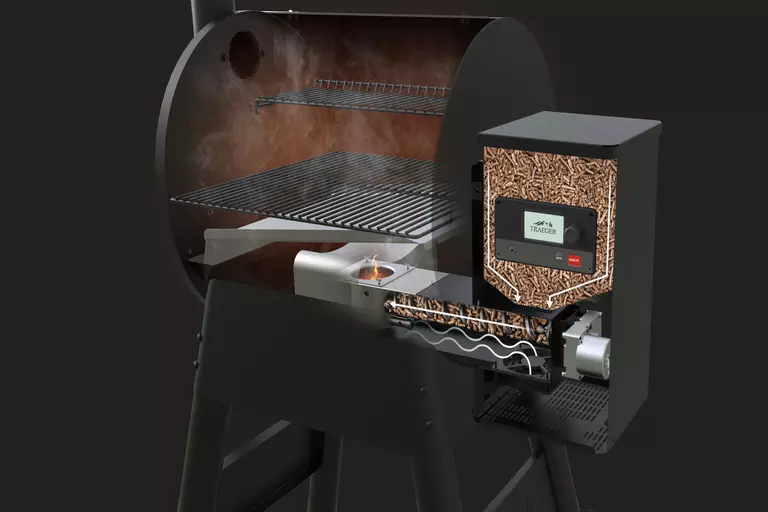
If I want to smoke some chicken thighs, for example, the process looks like this: slap meat on preheated grill; insert thermometer probe; input the target internal temp in the Traeger app; go about my day. The timer will ding when it’s ready, and I can shut down the grill from my phone.
All this gadgetry isn’t for show. It achieves what I believe is the single most important result of design: it’s made me want to use this grill almost every single day.
What’s Good About the Traeger Pro 575
It’s very convenient
Wifi-enabled controls allows you to monitor and change temps, shut down the grill, and keep it warm without actually having to be anywhere near the grill. Additionally, the newest line-up of Traegers come with a so-called TurboTemp feature, for quick preheating and lessened heat loss when opening the lid. During testing, I found the Pro 575 preheated to 350 degrees in under 10 mins.

While you can cook entirely by feel, a sensor probe lets the app know the temp of the meat. So instead of setting timers and checking temps when you feel like it’s done, you’ll know for sure — and can double check with an accurate meat thermometer.
It’s also unfussy to clean. A drip tray catches oil and drains it into a grease bucket, and the highly efficient pellets turn to dust which can be easily vacuumed with a shop vac. There’s no caked-on grease to worry about.
It cooks really well
The taste of wood pellets is simply superior to gas and charcoal. Sorry to all the Hank Hills out there, but gas, America’s most popular form of grilling, simply can’t compete with pellets on flavor. Pellet flavors range from mesquite to cherry, and are easy to swap in and out of the hopper.
Adding to its cooking powers: the grill holds its temperature automatically. Similar to your oven, in which you set a temp rather than a BTU output, this means you can cook more predictably and not have to constantly adjust knobs. In my testing, I was mostly inside the house cooking other parts of the meal while the meat was grilling itself. (Not having to stand outside by the grill is fantastic in the peak of summer or dead of winter.)
One other perk: there are no flareups with pellet grilles. Plus, indirect, convection heat means you’re not going to burn or char your food without really trying to mess up.
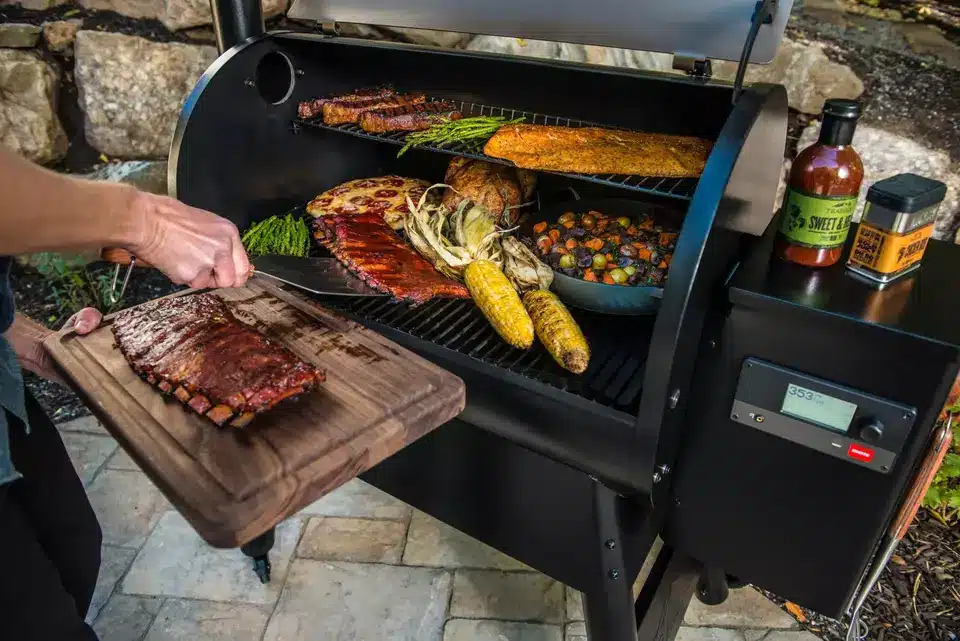
What’s Not Ideal About the Traeger 575
When people talk about Traeger, the price tag is one of the first things they note. The Pro 575 model we tested is the most budget-friendly option in the Traeger line-up. Capable gas and charcoal grills can be had for about half that. (Though decent gas grills are getting pricier all the time.)
It’s also not going to sear your steak. This is due to the grill’s use of indirect heat; while the grill can hit 500 degrees, this is convection air temperature, not direct radiant heat. Contrast this to my stovetop, which can bring my cast iron skillet up to 625 degrees in under five mins.
While dry pellets’ easy storage makes for a super convenient fuel source, the grill itself still needs to be plugged in. Depending on where your exterior outlets are, this should be a consideration about placement and the need for extension cords.
And while it isn’t a deal breaker, be warned that the only flat surface on the Pro series is the lid to the hopper. If you like to have room to stage all of your proteins and veggies before you cook them, you’ll need to invest in some add-on grill shelves, which add $70 to the price tag.
The Traeger Pro 575 Pellet Grill: The Verdict
If you’re okay with searing your steaks elsewhere, the Pro series from Traeger is a reasonably-sized grill capable of professional-level BBQing and smoking at consumer-level convenience. That said, those looking for a few more features or square inches of cooking space should explore Traeger’s Ironwood or Timberline series.

